CMN 222
Digital Discourse and Design

1. Course Description
Through a combination of writing and design assignments, lectures and discussions, this course explores the practical and theoretical consequences of the creation, delivery, and reception of texts in digital spaces and discusses effective digital writing principles and techniques. The implications of visual and interaction design are examined as they affect digital communication. Students will have the opportunity to work with digital technologies and to critique a range of online texts.
Last Revised
Prerequisites
CMN 200. Note: This course is available only to Professional Communication students
Delivery
Lecture: 2 hours, Lab: 1 hour
2. Course Objectives & Learning Outcomes
- To create effective digital texts for a range of purposes and audiences
- To analyze and design digital spaces, taking into account perception, information architecture, usability and visual design theory
- To demonstrate the ability to formulate and communicate digital text requirements in professional contexts
3. Topics Covered
- Content design for current and emerging online contexts
- Writing techniques for online content
- Cognition, perception and mental models
- Visual communication
- Usability practices
- Communication theory
- Privacy, security and ethics
- Design for accessibility
4. Teaching Method
Teaching Method
Classes will consist of interactive lectures and workshops. Students will work both individually and in groups.
Evaluation Method
Evaluation will be based on at least one development project, one written assignment and a midterm test. One assignment will require students to create a digital text. Students will be provided with access to appropriate technology and software, as well as workshops introducing these tools.
Microcredentials/Badges + Level 3 Benchmark
Three workshops will be delivered online. The successful completion of workshops will result in three microcredentials/badges: Web Designer 1, Web Designer 2, Web Designer 3. Together, the badges constitute the completion of the ProCom Level 3 tech-skills benchmark.
5. Course Materials
<h3>Textbooks</h3>
Redish, Janice (Ginny). (2012). Letting Go of the Words: Writing Web Content that Works. Morgan Kaufmann. ISBN: 978-0-12-385930-3
Additional readings will be posted in e-Reserve on D2L Brightspace
6. Policy
6.1 University Policies
Students are required to adhere to all applicable university policies found in their Online course shell in D2L and the Course Outline Policies.
6.2 Print and Digital Copying Guidelines:
Toronto Metropolitan University complies with Canada’s Copyright Act which protects both creators/owners and users of copyrighted materials. Students should familiarize themselves with TMU Copyright policies and procedures, and contact the Copyright and Scholarly Engagement Librarian at copyrt@ryerson.ca for questions, concerns and clarification of the copyright rules.
6.3 Turnitin.com
Turnitin.com is a plagiarism prevention and detection service to which Toronto Metropolitan University subscribes. It is a tool that helps instructors determine the similarity between student work and the work of other students who have submitted papers to the site (at any university), Internet sources, and a wide range of books, journals, and other publications. While it does not contain all possible sources, it gives instructors some assurance that students’ work is their own. No decisions are made by the service; it generates an “originality report,” which instructors must evaluate to judge whether something is plagiarized.
Students agree by taking this course that their written work will be subject to submission for textual similarity review to Turnitin.com. All submitted papers will be included as source documents in the Turnitin.com reference database solely for the purpose of comparing the similarity of such papers. Use of the Turnitin.com service is subject to the terms-of-use agreement posted on the Turnitin.com website. Students who do not want their work submitted to this plagiarism detection service must, by the end of the second week of class, consult with their instructor to make alternative arrangements. Even when an instructor has not indicated that a plagiarism detection service will be used, or when a student has opted out of the plagiarism detection service, if the instructor has reason to suspect that an individual piece of work has been plagiarized, the instructor is permitted to submit that work in a non-identifying way to any plagiarism detection service.
6.4 Email Communication
Toronto Metropolitan University requires that any official or formal email communication from students be sent from their official Toronto Metropolitan University electronic accounts.
6.5 Video and Audio Recording
No video or audio recording is permitted in class without the express permission of the instructor.
7. Learning Management System
Toronto Metropolitan University supports Brightspace by D2L as its official Learning Management System. University Policies governing Brightspace have been documented at the Courses @ Toronto Metropolitan University Privacy and Security website.

